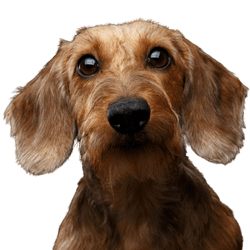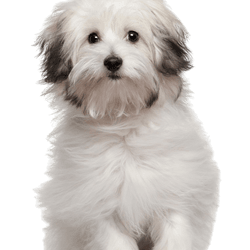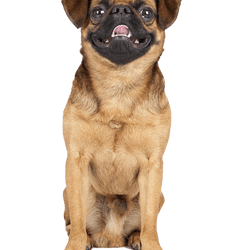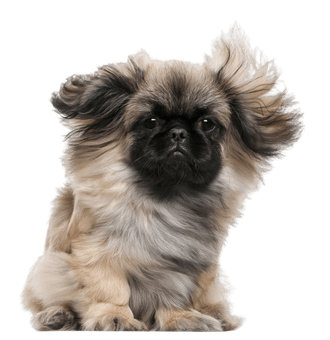
Pekinese Breed description: Character & Co
Pekinese
Facts & Origin
Origin and history of a Pekinese
The origin of these small dogs lies in China. There, they were already bred as companion dogs centuries ago. At first, the breed was exclusively reserved to the Chinese emperor to keep as a palace dog. In the 19th century, five Pekinese were brought to Europe by British officers for the first time. Two pairs of them are considered the progenitors of today's European breeding. The dogs came to Germany in 1900. A large selection of contact addresses of clubs and Pekinese breeders can be found on the homepage of the Verband für das Deutsche Hundewesen. The dog breed is recognised by the FCI and is listed in the FCI Group 9 (companion and social dogs), Section 8 (Japanese Spaniels and Pekinese), Standard No. 207, without working test.

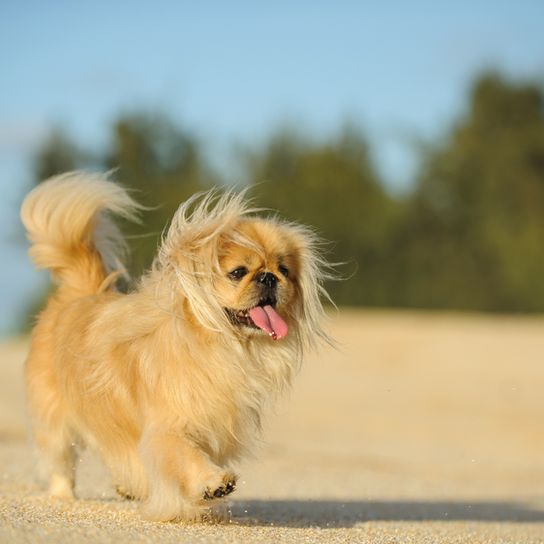


| Alternate Name | Pekingese, Pekingnese |
| Origin | China |
| Life expectancy | 12 - 14 years |
| Care requirements | high-maintenance |
| Activity level | low |
| FCI group | Japan Chin and Pekingese |
| AKC group | Toy Group |
| KC group | Toy Group |
Pekinese mixes
Attitude, character and temperament of the breed
Breed description and character
Pekinese are self-confident, intelligent dogs, but also affectionate and playful. They have a strong personality and are sometimes a bit stubborn. The dogs are also very picky and do not give show affection to just anyone. Because of their innate alertness, they also tend to bark when strangers approach. Basically, however, they are open towards strangers. Nevertheless, owners must pay special attention to one specific breed characteristic. Pekinese are considered to be brave, sometimes even daring, and will not hesitate to take on larger dogs, which can be to their disadvantage.
Attitude and training
The Pekinese is very well suited as a beginner and family dog. It integrates very well into families with children and develops a close relationship with them, but cannot be considered a petting animal in particular. It can be kept well in small apartments, but needs sufficient exercise due to its strong urge to move. Regular walks must therefore be a given. The Pekinese needs a consistent but loving upbringing. Otherwise it can mutate into a nervous yapper. It gets along well with other dogs, but has his problems with some other animals. Socialising them well from the beginning is therefore recommended. If you take the typical characteristics of the breed into account when keeping and raising them, you will enjoy these little dogs for a long time. If necessary, you can also look for advice from dog schools, dog clubs or breeders.
Character
Usage



Health and breeding information
Nutrition
The nutrition is fuss-free. The energy requirement of the small dogs is comparatively low. High-quality food, preferably with meat and little carbohydrates, is completely sufficient. Small dog treats without sugar but with a high meat content every now and them will delight your animal and also help with dental care. Sufficient drinking water should always be available to them.
Typical diseases of the Pekinese
The Pekinese dog belongs to the short-headed or round-headed breeds. This congenital, hereditary deformation of the dog's skull (Brachycephaly), can sometimes cause serious health problems:
- Brachycephalic syndrome: severe obstruction of breathing (wheezing breath and snoring sounds) and disturbed thermo-regulation. The dogs are at risk of heat stroke.
- Hydrocephalus (hydrocephalus): pathological widening of the subarachnoid spaces filled with cerebrospinal fluid in the brain and spinal cord.
- Dystocia: increased risk of having difficult births, disturbed birth processes and weakness in labour. Often only a caesarean section is the only help.
The brachycephalic syndrome often leads to shortness of breath, oedema in the throat area, bronchitis and heart failure. The oxygen saturation in the blood is insufficient. The breed's short head shape often causes the dogs to have a pronounced overbite. The result can occasionally be an inadequate bite function. Eye inflammations, asthma and disc diseases are also not uncommon. To keep your Pekinese healthy for a long time, you should pay your vet a visit regularly.
Interesting facts about Pekinese breeding
According to an expert opinion of the Federal Ministry of Food and Agriculture, particularly pronounced manifestations of brachycephaly in Pekinese dogs, e.g. out-bred skull deformations, are considered to be torture breeding. These dogs suffer a lot. In Germany, according to § 11b of the Animal Protection Act, so-called torture breeding is prohibited. The breeding associations are obliged to observe the corresponding breeding restrictions and change the breeding standards. In Austria, too, torture breeding is forbidden under threat of punishment according to the federal law for the protection of animals in force.
If you want to buy a Pekinese puppy, the right place to look at is the Verband für das Deutsche Hundewesen (VDH). A puppy costs about 500-900 Euros. At this largest umbrella organisation for dog breeding and dog sports in Germany you can find a lot of contact addresses of serious Pekinese breeders. Alternatively, you can also contact the 1st German Pekingese Club of 1987 e.V.


The dogs have a dense coat and long, straight hair. The mane should form a scarf-like shape around the head according to the current standard but should not extend further than to the shoulder. With exception of the neck and tail, excessive hair is unacceptable. The short and broad muzzle must be visible. The limbs are short and end in flat paws. Typically, Pekinese can have the coat colours white, dark brown, red, fawn and black tan. However, all colours, shades and markings are permitted. In the breeding line a dark mask is desired, i.e. black pigmentation of nose, lips and eyelid edges. The dogs reach a size of 15 to 25 cm. However, the weight should be less than 5 kg for males and less than 5.4 kg for bitches. The life expectancy is about 13 years.
The Pekinese's coat
Their coat care is relatively time-consuming, but absolutely necessary because the hair of the Pekinese easily gets matted and as a result unattractive. The luxuriant coat that is of a somewhat hard texture with its dense soft undercoat, must be combed regularly, if possible daily, and always brushed against the grain. If you don't pay special attention to them having a specific hairstyle, you can also have the Pekinese trimmed. However, especially in the cold season, care should be taken not to trim the coat too short, as the dogs easily get cold.
| Fur length | long |
| Fur | flat coated |
| Ear shape | Triangle |
| Tail | fanned out |
| Anatomy | strong |
| Size ♀ | 15 - 23 cm |
| Weight ♀ | 3 - 6 kg |
| Size ♂ | 15 - 23 cm |
| Weight ♂ | 3 - 6 kg |
| Suitable For | Beginner, Seniors |
Colors

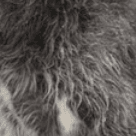


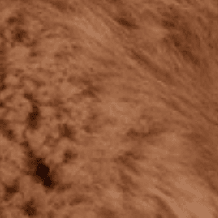


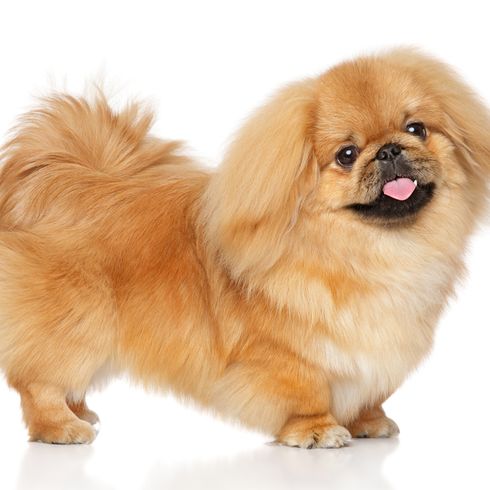

Known Diseases
Disc problems
Herniated disc in dogs (discopathy). Herniated discs or dachshund paralysis cause dogs severe pain.
Bronchitis
Bronchitis in dogs is an inflammation of the lower airways in the area of the bronchi.
Denture malocclusions
Malocclusions of the dentition often occur in dogs with short muzzles.
Shortness of breath
Difficult breathing can be recognized by the dog's rattling and sometimes accelerated breathing rate.
FAQ
-
Yes, a Pekingese is an excellent companion and family dog. Be careful with children that he does not approach them aggressively.
-
A Pekingese needs little to average exercise. 30-120 minutes a day is enough.
-
A Pekingese may weigh a maximum of 6kg, otherwise it is overweight according to the breed standard. Pay attention to high quality food.
-
Approx. 1700 Euro costs a purebred Pekingese puppy.
Other small dogs
Useful Articles
You can find articles that might interest you in the dogbible blog to match your favorite breed.
Visit our magazineto stay up to date on dog trends.
To find out more, view our Privacy Policy
Find here the breed that suits you and find out what character traits it has. Here you can also learn more about the origin, size and weight of your favorite breeds.
Matching your favorite breed, you'll find articles that might interest you on the dogbible dog blog.
Eye inflammation in dogs - eye diseases and their causes
Lake Garda with dog - Dog runs, Bathing place for dogs, Dog beach on Lake Garda
Hiking with dog in Vienna - the most beautiful routes
Spirulina for dog - why do you need it?
Dog beach Balaton: These dog places at the Balaton you should know





